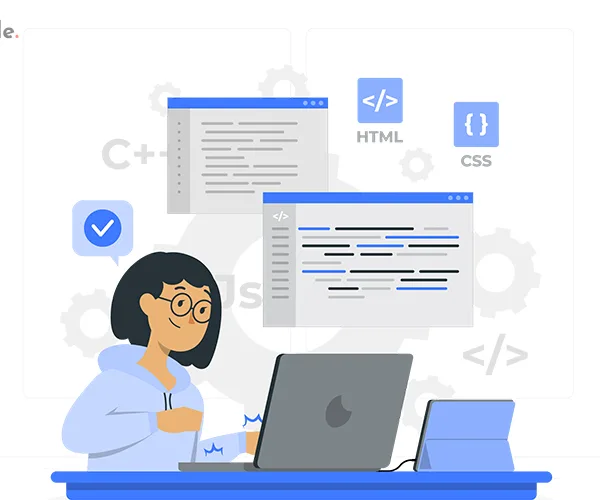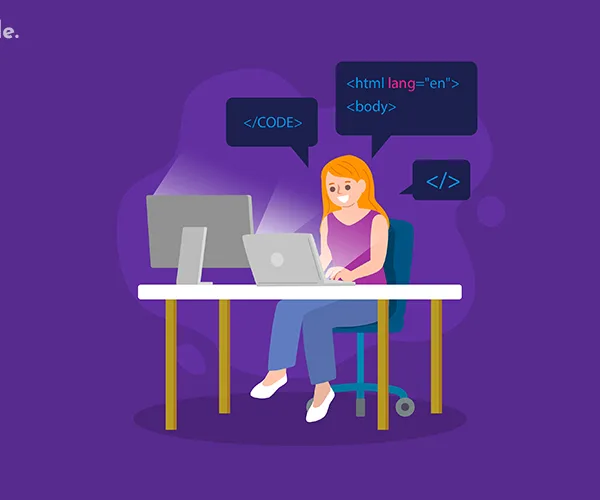Dive into the world of JavaScript Exception Handling! In this comprehensive guide, we unravel the intricacies of managing errors, empowering you to build robust applications with confidence.
Table of Contents
Introduction:
Welcome, fellow developers, to a journey into the intricate world of JavaScript Exception Handling. As we navigate through the realms of error management, this blog post aims to equip you with the knowledge and skills needed to tackle unexpected issues head-on. Whether you are a seasoned developer or just starting, understanding how to handle exceptions in JavaScript is crucial for building robust and reliable applications.

II. Understanding JavaScript Exceptions
What are Exceptions?
Exception handling is the process of managing errors that may occur during the execution of a JavaScript program. An exception is an abnormal event that disrupts the normal flow of the program, and JavaScript provides mechanisms to gracefully handle such situations.
Types of Exceptions:
Let’s delve into the common types of exceptions you might encounter in JavaScript:
SyntaxError:
- Example:
let x = 10;
console.log(x
In this case, the missing closing parenthesis will trigger a SyntaxError.
ReferenceError:
- Example:
console.log(y);
TypeError:
- Example:
let num = "Hello";
console.log(num.toFixed(2));
Calling the toFixed method on a string will cause a TypeError.
Custom Exceptions:
- Example:
function divide(a, b) {
if (b === 0) {
throw new Error("Cannot divide by zero!");
}
return a / b;
}II. The Try-Catch Block
1. Implementing the Basics:
Now that we’ve identified the types of exceptions, let’s explore the try-catch block – the fundamental structure for handling exceptions in JavaScript.
try {
// Code that may throw an exception
let result = divide(10, 0);
console.log(result);
} catch (error) {
// Code to handle the exception
console.error("An error occurred:", error.message);
}2. Multiple Catch Blocks:
try {
// Code that may throw different types of exceptions
} catch (SyntaxError) {
console.error("Caught a SyntaxError");
} catch (ReferenceError) {
console.error("Caught a ReferenceError");
} catch (error) {
console.error("An unexpected error occurred:", error.message);
}
## Finally Block:
```javascript
try {
// Code that may throw an exception
} catch (error) {
// Code to handle the exception
} finally {
// Code that always runs, regardless of whether an exception was thrown
}
## Advanced Exception Handling Techniques
### Promises and Async/Await:
Handling exceptions in asynchronous code is crucial. Let's explore how to manage errors using promises and async/await.
```javascript
async function fetchData() {
try {
let response = await fetch('https://api.example.com/data');
let data = await response.json();
console.log(data);
} catch (error) {
console.error('Error fetching data:', error.message);
}
}
3. Global Error Handling:
Setting up a global error handler ensures that unhandled exceptions don’t crash your entire application.
window.addEventListener('error', function (event) {
console.error('Global error:', event.error.message);
});FAQ
01. What is JavaScript Exception Handling, and why is it crucial for developers?
Delve into the fundamentals of handling errors and understand its significance in building reliable applications.
02. How does the try-catch block work in JavaScript Exception Handling?
Explore the core structure of try-catch blocks and how they effectively manage different types of exceptions.
03. Can you provide examples of common JavaScript exceptions and how to handle them?
Learn through real-world examples, from SyntaxError to custom exceptions, with practical solutions for each.
04. What advanced techniques are available for handling exceptions in asynchronous JavaScript code?
Uncover the nuances of managing errors in asynchronous scenarios using promises and the powerful async/await pattern.
05. How can developers implement global error handling to ensure application resilience?
Understand the importance of a global error handler and discover how to set it up to catch unhandled exceptions and prevent application crashes.
Conclusion
In conclusion, mastering JavaScript exception handling is essential for creating resilient and reliable applications. By understanding the types of exceptions, implementing try-catch blocks effectively, and exploring advanced techniques, you can fortify your code against unexpected errors. Remember, the key is not just catching errors but handling them gracefully to provide a seamless user experience.
So, fellow developers, go forth and code with confidence, armed with the knowledge to conquer JavaScript exceptions! Happy coding!



